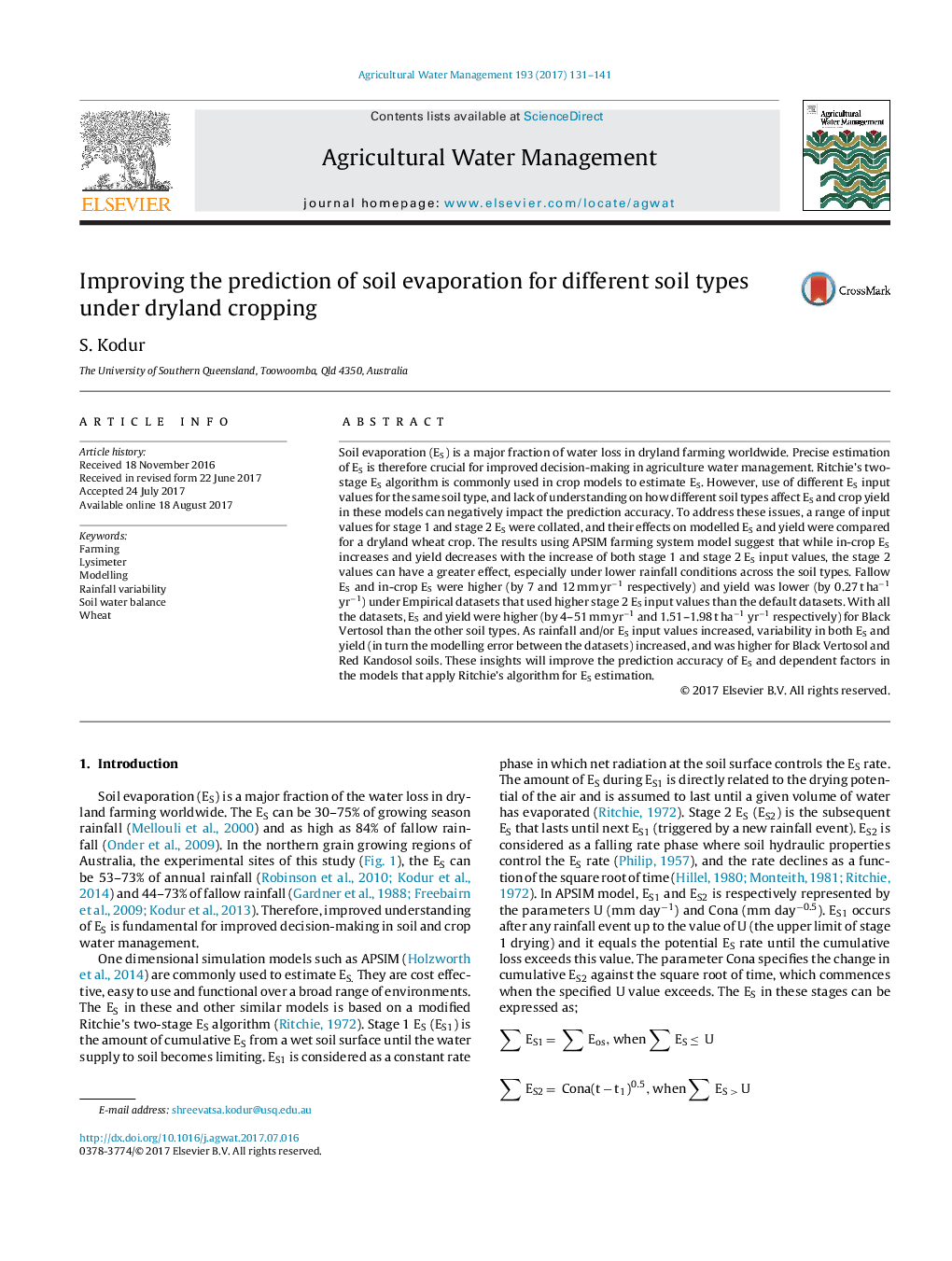| کد مقاله | کد نشریه | سال انتشار | مقاله انگلیسی | نسخه تمام متن |
|---|---|---|---|---|
| 5758265 | 1622887 | 2017 | 11 صفحه PDF | دانلود رایگان |
- Effects of soil types and model input parameters on simulated evaporation and yield were studied.
- Stage 2 soil evaporation dominated dryland cropping conditions for all soils.
- Variability in soil evaporation and yield was greater for Heavy clay and sandy soils.
- Soil evaporation and yield were quantified according to model input values to improve prediction efficiency.
Soil evaporation (ES) is a major fraction of water loss in dryland farming worldwide. Precise estimation of ES is therefore crucial for improved decision-making in agriculture water management. Ritchie's two-stage ES algorithm is commonly used in crop models to estimate ES. However, use of different ES input values for the same soil type, and lack of understanding on how different soil types affect ES and crop yield in these models can negatively impact the prediction accuracy. To address these issues, a range of input values for stage 1 and stage 2 ES were collated, and their effects on modelled ES and yield were compared for a dryland wheat crop. The results using APSIM farming system model suggest that while in-crop ES increases and yield decreases with the increase of both stage 1 and stage 2 ES input values, the stage 2 values can have a greater effect, especially under lower rainfall conditions across the soil types. Fallow ES and in-crop ES were higher (by 7 and 12 mm yrâ1 respectively) and yield was lower (by 0.27 t haâ1 yrâ1) under Empirical datasets that used higher stage 2 ES input values than the default datasets. With all the datasets, ES and yield were higher (by 4-51 mm yrâ1 and 1.51-1.98 t haâ1 yrâ1 respectively) for Black Vertosol than the other soil types. As rainfall and/or ES input values increased, variability in both ES and yield (in turn the modelling error between the datasets) increased, and was higher for Black Vertosol and Red Kandosol soils. These insights will improve the prediction accuracy of ES and dependent factors in the models that apply Ritchie's algorithm for ES estimation.
Journal: Agricultural Water Management - Volume 193, November 2017, Pages 131-141
